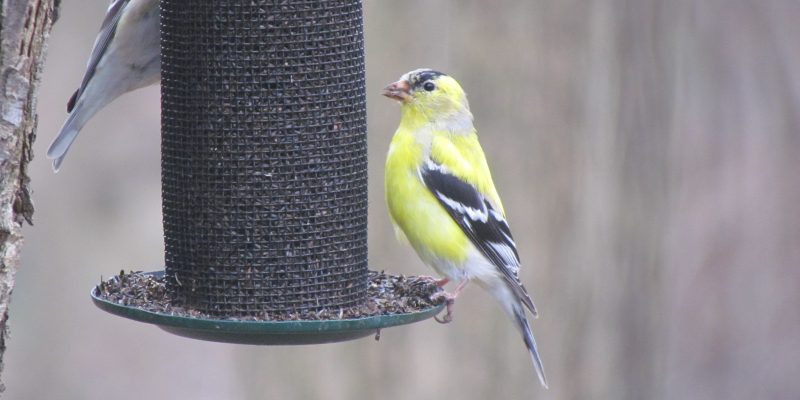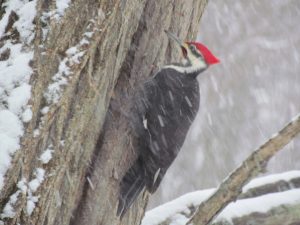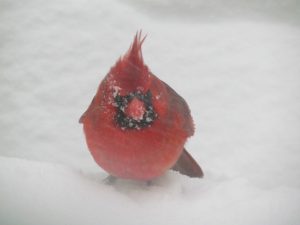
 It’s pretty quiet outside this time of year compared to spring and summer. The cacophony of insects, peepers, foxes, and birds is gone as most have gone into hibernation, migrated south, or outright died (in the case of many species of insects). So, you may find it odd to hear that there are several birdwatching opportunities in the cold winter months. Not only that, but ornithologists — scientists who study birds — want to know what types of birds you see to help them understand where birds thrive and where declining populations need to be protected.
It’s pretty quiet outside this time of year compared to spring and summer. The cacophony of insects, peepers, foxes, and birds is gone as most have gone into hibernation, migrated south, or outright died (in the case of many species of insects). So, you may find it odd to hear that there are several birdwatching opportunities in the cold winter months. Not only that, but ornithologists — scientists who study birds — want to know what types of birds you see to help them understand where birds thrive and where declining populations need to be protected.
“The United States and Canada have lost three billion breeding birds since 1970—a loss of one in four birds, according to research published in Science in 2019. This steep decline in abundance can be reversed with new scales of conservation actions that benefit not only birds but also wildlife and people. When birds thrive, we all win.” (Source: https://www.stateofthebirds.org/2022).
From November to April every year, Project FeederWatch takes place. Since the 1980s, people across the US and in most Canadian provinces record and report the birds seen in their yard’s bird feeders. It is amazing how quickly a yard can go from being silent to a return of frantic activity once you put some seed out for the birds. Of course, you may also get some squirrels and chipmunks too, so you might want to put feeders up out of their reach. Because they are very intelligent, baffles and squirrel-proof feeders help. Participants choose two consecutive days each week to record the types of birds and the highest number seen of each bird. Those tallies can either be mailed in or entered online. It is pretty simple, and the time commitment is up to each participant. I find it very relaxing watching and counting birds while eating breakfast or having my coffee, and I often count more while gazing out the window as I wash the dishes. There is a small fee to participate. For more info, visit https://feederwatch.org.
 The Annual Audubon Christmas Bird Count (CBC) is a census taken of birds in a certain location. Prior to the 20th century, hunters had a tradition where they would go out, hunt as many birds as possible, and compare the number of birds shot with one another. It was called the Christmas “Side Hunt”. Ornithologist Frank M. Chapman proposed a national holiday to protect birds called the “Christmas Bird Census”. On Christmas Day in 1900, members of the Audubon Society went out to count as many living birds as they could, leaving them undisturbed. This was the beginning of an annual tradition that has now lasted 122 years. Nowadays, participants sign up in November on the Audubon website, and the count is held from December 14th to January 5th. The data collected helps ornithologists, conservation biologists, and wildlife agencies understand how species are doing and where to advocate for habitat protection. Learn more at https://www.audubon.org/conservation/science/christmas-bird-count.
The Annual Audubon Christmas Bird Count (CBC) is a census taken of birds in a certain location. Prior to the 20th century, hunters had a tradition where they would go out, hunt as many birds as possible, and compare the number of birds shot with one another. It was called the Christmas “Side Hunt”. Ornithologist Frank M. Chapman proposed a national holiday to protect birds called the “Christmas Bird Census”. On Christmas Day in 1900, members of the Audubon Society went out to count as many living birds as they could, leaving them undisturbed. This was the beginning of an annual tradition that has now lasted 122 years. Nowadays, participants sign up in November on the Audubon website, and the count is held from December 14th to January 5th. The data collected helps ornithologists, conservation biologists, and wildlife agencies understand how species are doing and where to advocate for habitat protection. Learn more at https://www.audubon.org/conservation/science/christmas-bird-count.
Every February, most school districts give kids a four-day weekend for President’s Day. This is when the Great Backyard Bird Count (GBBC) takes place. The GBBC is free and open to the public. You select a location, watch for birds for a minimum of 15 minutes on at least one of the four days, count all the birds you see and hear, then record them in the eBird mobile app or at the eBird website (https://www.birdcount.org/ebird-on-computer). This app has a GPS in it, so the location of the sighting is precise. Children love participating in this. What makes this count really exciting is that spring migration begins in February. I have been participating in this event for many years and find it so exciting to see the Red-Winged Blackbirds, Grackles, Cowbirds, and Starlings return in huge flocks to our area. They often show up before the robins (many of whom have overwintered in our wooded areas and forests).
Whether you are new to birding or a seasoned birder, the Merlin Bird app helps you identify birds by sound and photos. It is available for both Apple and Android (https://merlin.allaboutbirds.org/download). It includes information about where birds are found, what they look like, and what time of year they are around. Once you have identified the bird, you can record it in the eBird app. All data entered is sent to Cornell Lab of Ornithology to help expand their database of bird sightings. Individuals who report bird sightings are referred to as Citizen Scientists. The data they send in helps ornithologists in their efforts to bring birds back from the brink. A few minutes of your time is invaluable in preserving and protecting bird species.
